If you are not familiar with the Eastern Europe it is better if you start your discovery with a city tour. This will give you an opportunity not only to get acquainted with the countries but also to get to know how the youth is spending their time over this forgotten part of the land.
1.Odessa, Ukraine
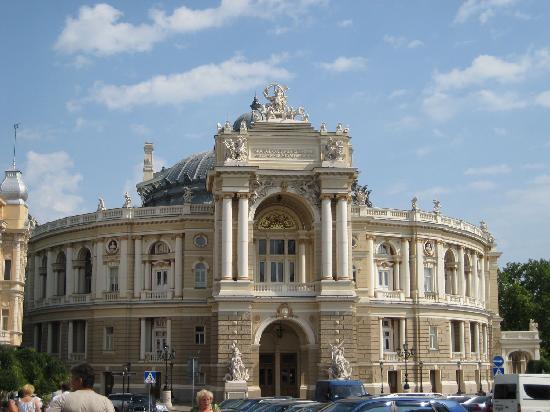
Odessa was founded in 1794 by Catherine II as a port for the expansion of affairs with Europe. Odessa was once an ancient Greek settlement . Successfully located geographically, Odessa has rapidly evolved from a small settlement in the commercial, industrial and scientific center of European significance. “Golden Age” of Odessa associated with the name of one of the first mayors of the Duke de Reszel. Today the city continues to evolve, now as a major industrial and resort center of Ukraine.
In Odessa, you can visit many interesting excursions. There are guided tours on the criminal, musical, literary past of the city, tours of the catacombs, in the wine houses, which produce white and red wines from the best grapes south of Ukraine.
Major museums in Odessa – is the Archaeological Museum, the oldest museum in the city, there were 170 thousand exhibits from Paleolithic times to the Middle Ages, Maritime Museum: Art Museum, where the golden treasury of works by Aivazovsky, Kostandi, Kuindzhi, Vereshchagin, Vrubel and many others; Museum Western and Eastern art, where you can see the paintings of Michelangelo da Caravaggio, Alessandro Magnasco, Francesco Guardi, Bernardo Bellotto, as well as works by Flemish and Dutch masters; Literature Museum.
Odessa is rich in entertainment for all tastes – it has night clubs, cinemas, casino, water parks. Every year on April 1 here is a cheerful and colorful festival Yumorina, which serve famous satirists and humorists of the CIS, and also an arranged carnival procession.
2.Prague, Czech Republic
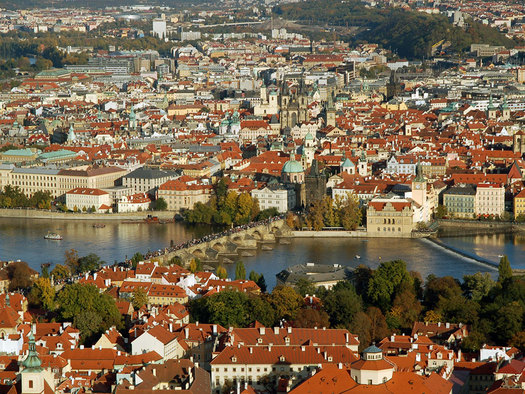
Prague is one of the most beautiful, romantic and best preserved cities in Europe. Since X century Prague is the capital of the Czech state.
Architecture Baroque, Romanesque and Gothic, Rococo and Renaissance combined with the beginning of the century Art Nouveau style and unique cubic buildings are decorating this city.
Wherever you go: through the winding streets of Old Town Square with Tyn Church and the Town Hall with the famous clock, or on the Charles Bridge – one of the oldest in Central Europe, the unique architecture will surround you from all the sides. Unique panorama of Prague Castle, accented by elegant towers of St. Vitus.
Already in the Middle Ages Prague considered to be one of the most beautiful cities in the world and was known only as “golden”, “city of a hundred steeples,” “Crown of Peace”, “a stone dream”. Over the centuries, prominent personalities showed her their compliments. Mozart Beethoven, Dostoyevsky, Rodin, Apollinaire, Tchaikovsky, Queen Elizabeth II and Pope John Paul II expressed their admiration for her beauty. Writers and poets such as Jan Neruda, Jaroslav Hasek, Franz Kafka, Egon Erwin Kisch, portrayed their native city in their works.
3.Budapest, Hungary
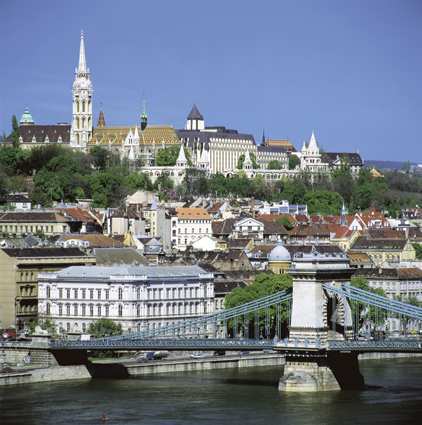
Whether it is morning, afternoon or evening, whether you admire Budapest from Gellert Hill, Fishermen’s Bastion from the terrace, with a waterfront promenade or from the observation deck of the Basilica of St. Stephen – the picture that opens before you, will always be wonderful.
In the first century AD on the territory of Budapest was built Aquincum – the main city of the Roman province, and in the Middle Ages Buda was the capital of the Hungarian kingdom.
Lake Balaton – the most famous swimming pool in Budapest. It was built on the spot, where since ancient times, there is a source of thermal waters. A short walk from the embankment on the Buda side, to the Freedom Monument on Gellert Hill, and with a spectacular view of Budapest. A rigorous series of modern international class hotel on the Pest embankment, the elegant streets of shops, cozy restaurants, cafes and snack bars will nicely surprise you.
The most popular place where budapestians and guests are visiting are the Margaret Island and the city park Varoshliget. City Park Varoshliget – is not only a lot of entertainment, but also the cultural center. In the central part of the park, at the Heroes’ Square, Millennium Monument is located in Hungary. In the park you can enjoy your time on a roller coaster in an amusement park, visit the circus, the capital’s zoo or botanical garden. It also houses the famous restaurant, Gundel, where you will offer delicious dishes of Hungarian cuisine with the binding of spicy seasonings and spices, hot pepper – paprika.
4.Warsawa, Poland
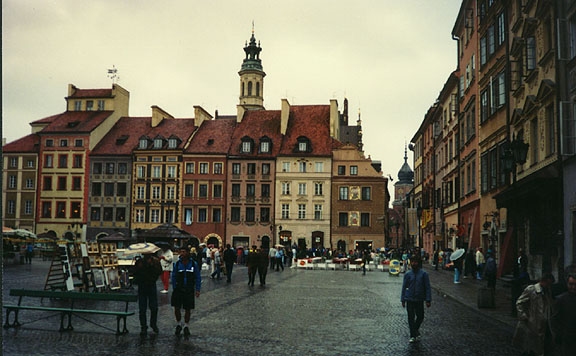
Those who come to Warsaw by train, the city may seem too Europeanized. No wonder – in the center of Warsaw, a recently built-up rather gloomy houses can be called materialization of modern construction. Near the Palace of Culture and Science – the only former Warsaw skyscraper, is now a modern building built on.
At the Royal Route goes another feature of Warsaw – Royal Gardens Lazenkovskogo Park, where around a beautiful lake in a shady park there are few strolling peacocks. Here is a Palace on the Water – the summer royal residence of the 18 th century. In Warsaw Lazienki Park is a monument to the famous Polish composer Frederic Chopin, next to which the summer open-air hosts concerts of classical music.
In Warsaw, a large selection of ethnic cuisine restaurants that are open till late at night. In the Old City of rapidly increasing number of restaurants offering both Polish and international cuisine. In the southern part of the Royal path are student clubs that offer a range of cultural activities including concerts of young artist, poetry, theater performances, as well as folk and jazz concerts, but the main focus of the entertainment life of the city at night take a disco.
5.Plovdiv, Bulgaria
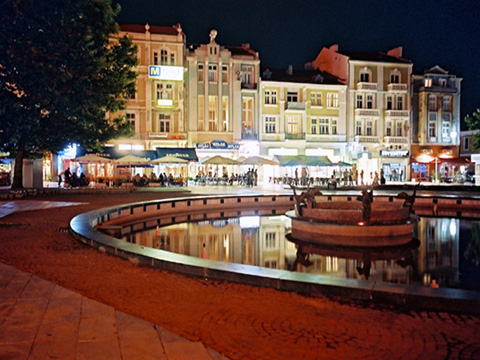
Plovdiv – is the second largest city in Bulgaria and one of the oldest in the country. In 343 BC, it was founded by Philip of Macedonia on the site of the Thracian settlement under the name of Pul-Pudeva. The city experienced the rise and decline, was razed to its very foundations, newly restored and kept to this day many monuments of archeology and culture: the Roman forum and theater, stadium, acropolis, temples and baths, the excavations of the Neolithic settlements and Bronze Age.
The rich history of Plovdiv proves it to be one of the most picturesque towns in Bulgaria, with its narrow streets, exquisite hand-painted facades of buildings, cozy restaurants and cafes, wood carvings everywhere … no wonder Plovdiv attracted so artists, who are subjects for his paintings in the Old Town is literally at every step. Under the protection of UNESCO are more than 200 buildings in Plovdiv, declared historical monuments.
Antique Theater in Plovdiv is preserved so well that it was restored, and now there are presentation and the festival. The theater holds 3000 spectators. Moreover, in Plovdiv, you can see the remnants of stone Thracian fortress encircling the city, the mosque Soup kitchen and Juma, from the time of Turkish rule, the Church of the Bulgarian Revival.
Plovdiv Bulgaria for not only an important tourist center, but also one of the economic, business and shopping centers in the country, known as the venue for numerous international conferences, festivals, exhibitions, symposiums and forums. During such events is difficult to find vacant rooms in hotels in Plovdiv, so better book a room in advance.


So… where is Istanbul?
Capital of all capitals… My love…
It was! Very very long ago.
Istanbul is not in Europe, Ali 😉 😀
Yes, Istambul is Europe, at least, some parts of it! You missed many other cities in Balkans, but these are also great!